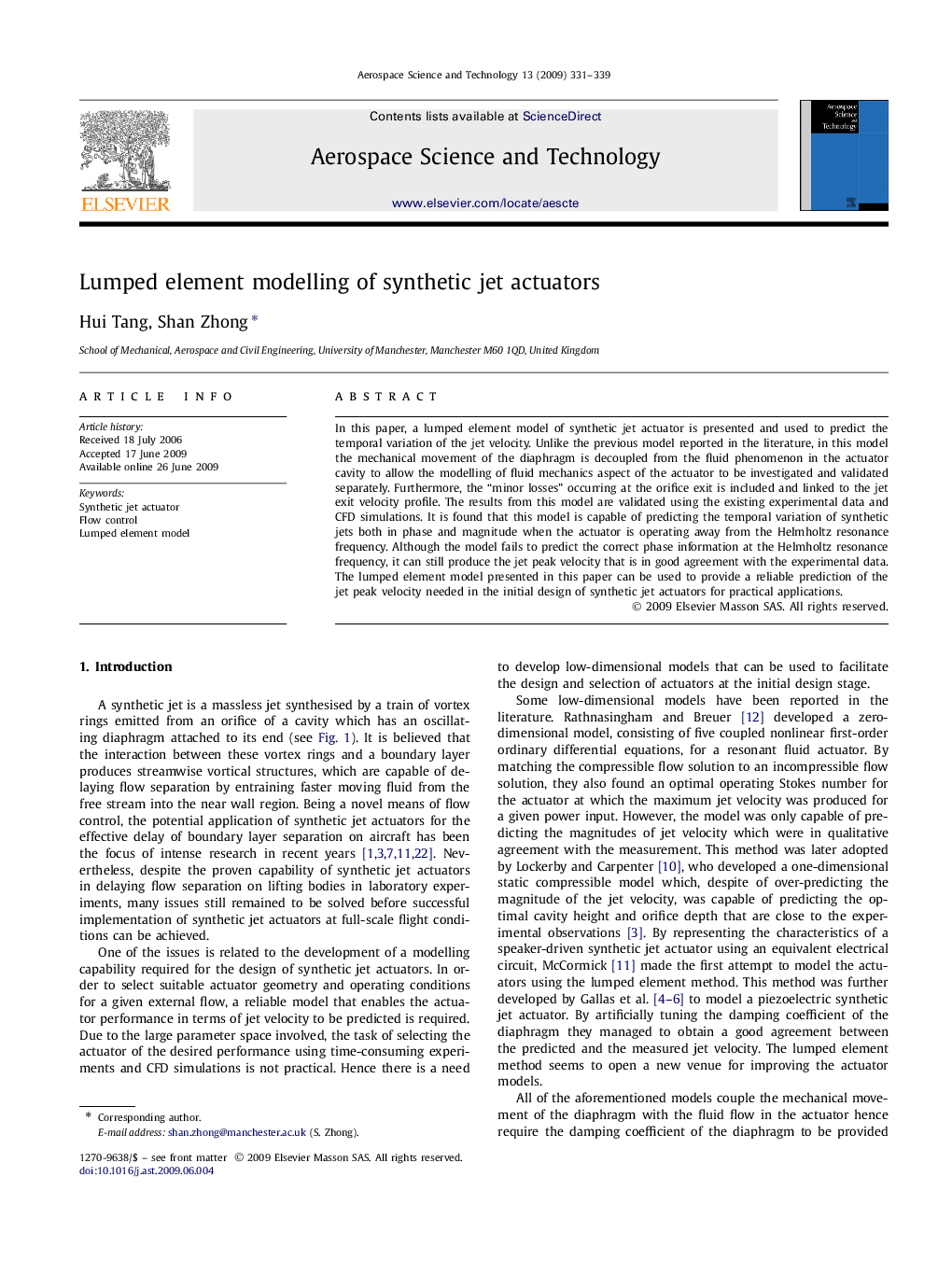| Article ID | Journal | Published Year | Pages | File Type |
|---|---|---|---|---|
| 1718760 | Aerospace Science and Technology | 2009 | 9 Pages |
In this paper, a lumped element model of synthetic jet actuator is presented and used to predict the temporal variation of the jet velocity. Unlike the previous model reported in the literature, in this model the mechanical movement of the diaphragm is decoupled from the fluid phenomenon in the actuator cavity to allow the modelling of fluid mechanics aspect of the actuator to be investigated and validated separately. Furthermore, the “minor losses” occurring at the orifice exit is included and linked to the jet exit velocity profile. The results from this model are validated using the existing experimental data and CFD simulations. It is found that this model is capable of predicting the temporal variation of synthetic jets both in phase and magnitude when the actuator is operating away from the Helmholtz resonance frequency. Although the model fails to predict the correct phase information at the Helmholtz resonance frequency, it can still produce the jet peak velocity that is in good agreement with the experimental data. The lumped element model presented in this paper can be used to provide a reliable prediction of the jet peak velocity needed in the initial design of synthetic jet actuators for practical applications.
